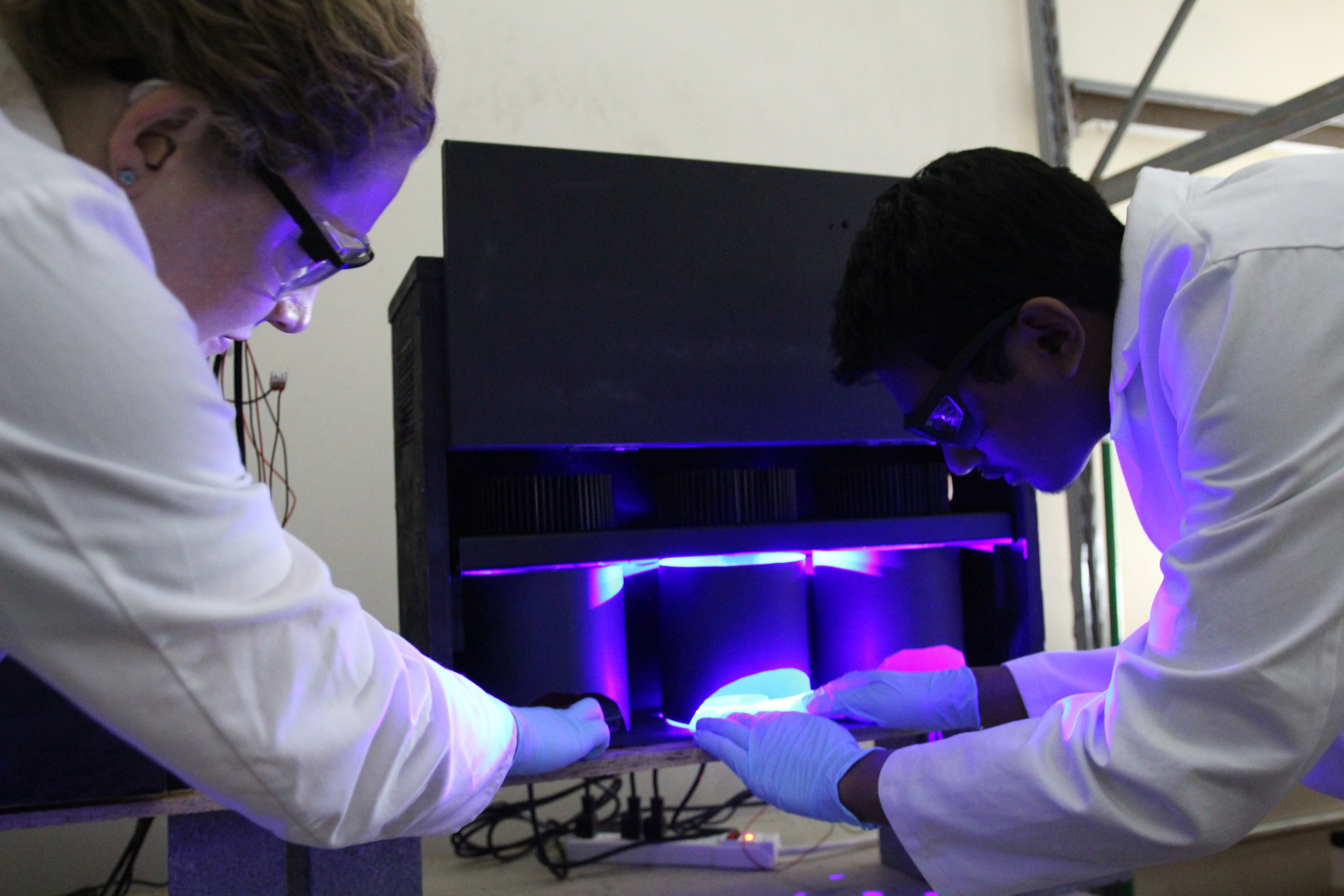We use chemistry to tackle environmental challenges related to agriculture and water quality. Our goal is to understand contaminant degradation from a mechanistic vantage point to predict the fate of organic compounds in the environment and in engineered water treatment. A central research theme in our group is light-driven processes – how pollutants interact with light and how they degrade – which we address using fundamental photochemistry principles and laser spectroscopy.
Active Projects
Plastic photodegradation in agricultural and aquatic systems
Singlet oxygen generation from pyrogenic organic matter
Aquatic toxicity of commercial biomaterials
Flavonoid photochemistry
Past Projects
Organosilicone surfactant fate in bee pollen
Singlet oxygen phosphorescence to understand the photochemical properties of dissolved organic matter
Fullerene photosensitizers for solar disinfection technologies
Facilities
Our lab is housed in the Utah Water Research Lab, where we work in the shared use Environmental Quality Laboratory, which has extensive analytical instrumentation. Our lab routinely uses many shared-use instruments, including HPLC, GC-MS, and LC-MS-MS, to quantify trace organic compounds.
A central instrument in our lab is our laser system, an Edinburgh LP980 that is powered by a tunable Opotek Radiant laser. This system allows us to follow the kinetics of photochemical processes at the nanosecond scale. We have the ability to measure transient absorption kinetics and time-resolved singlet oxygen phosphorescence. The Opotek Radiant laser is tunable, allowing us to set the excitation wavelength anywhere from 210-2500 nm to investigate wavelength dependent photochemical processes.
We also have various UV light sources to study steady-state photochemical processes.
Edinburgh LP980 transient absorption system with standard PMT detector and TE-cooled NIR-PMT detector for singlet oxygen detection
Opotek Radiant tunable laser system. Emits high energy nanosecond pulses that drive the transient measurements observed with the LP980 spectrometer
UV LED photoreactor





